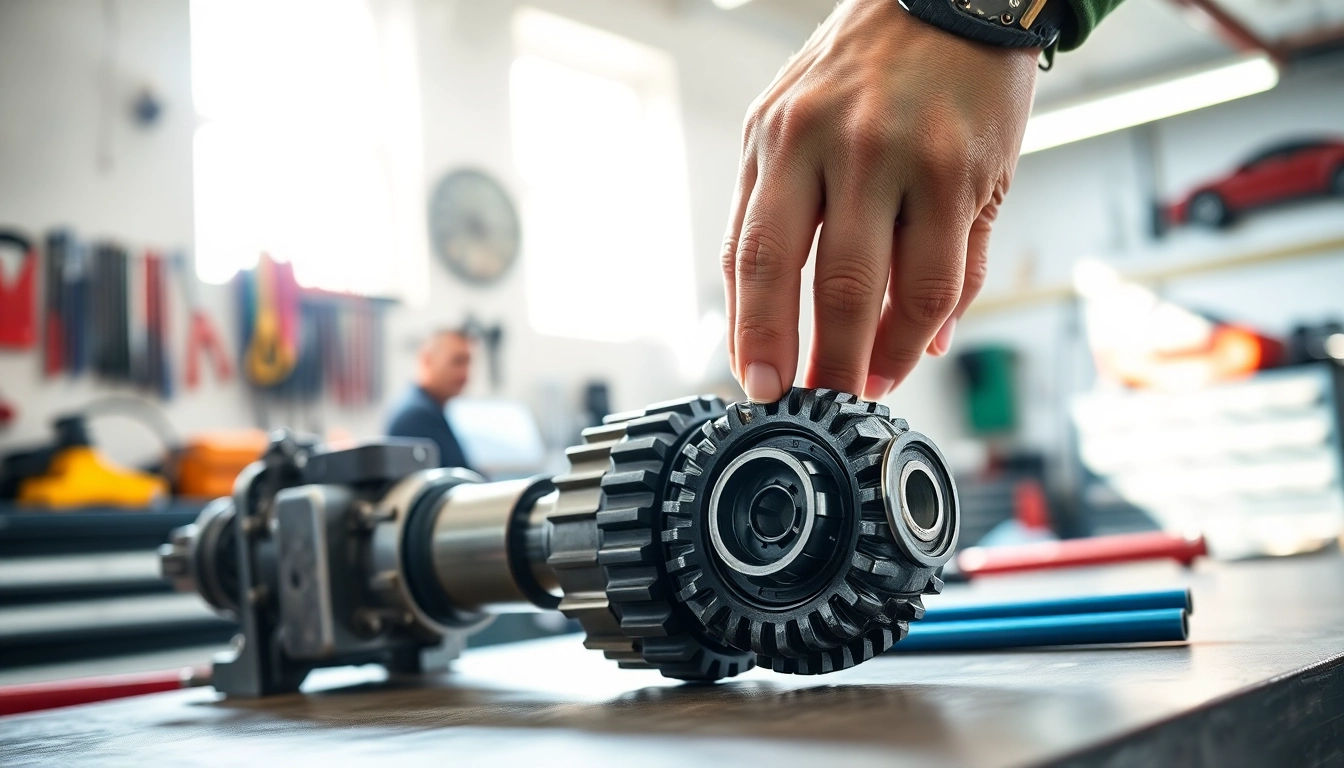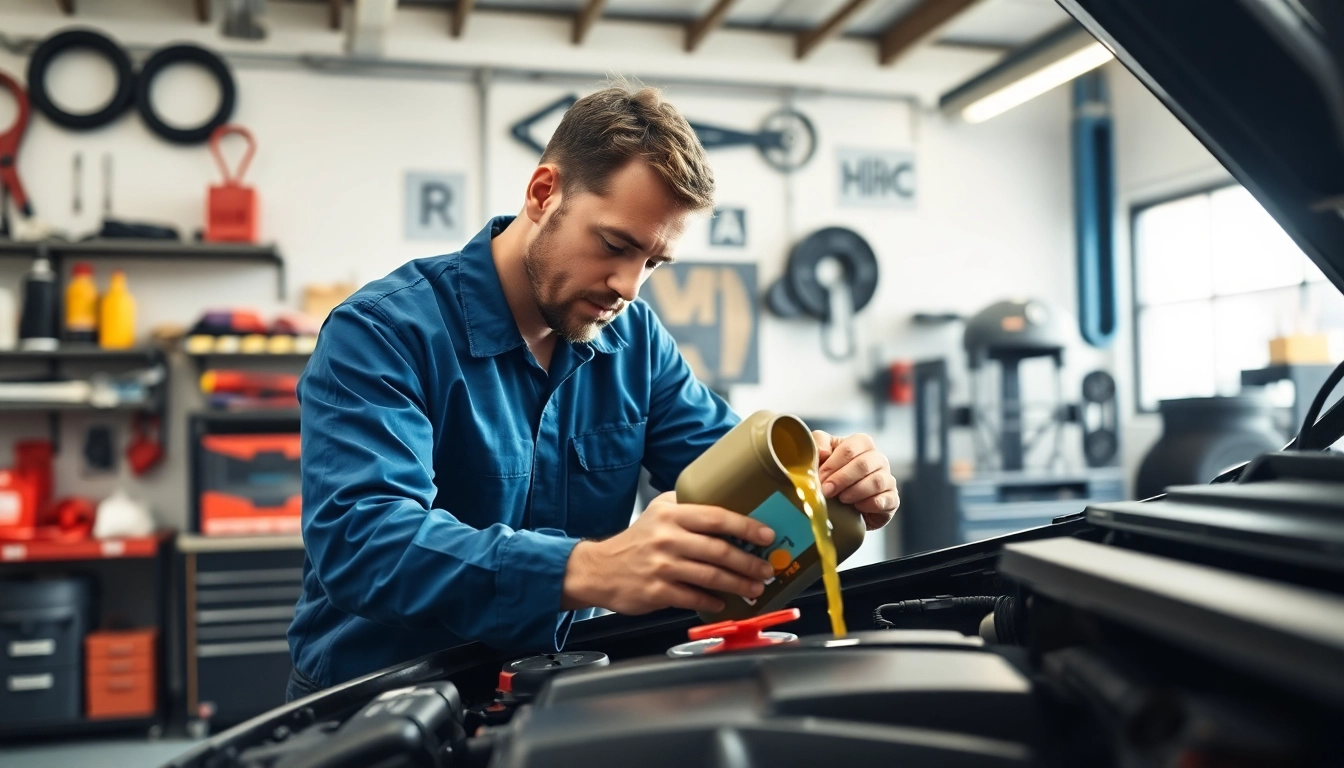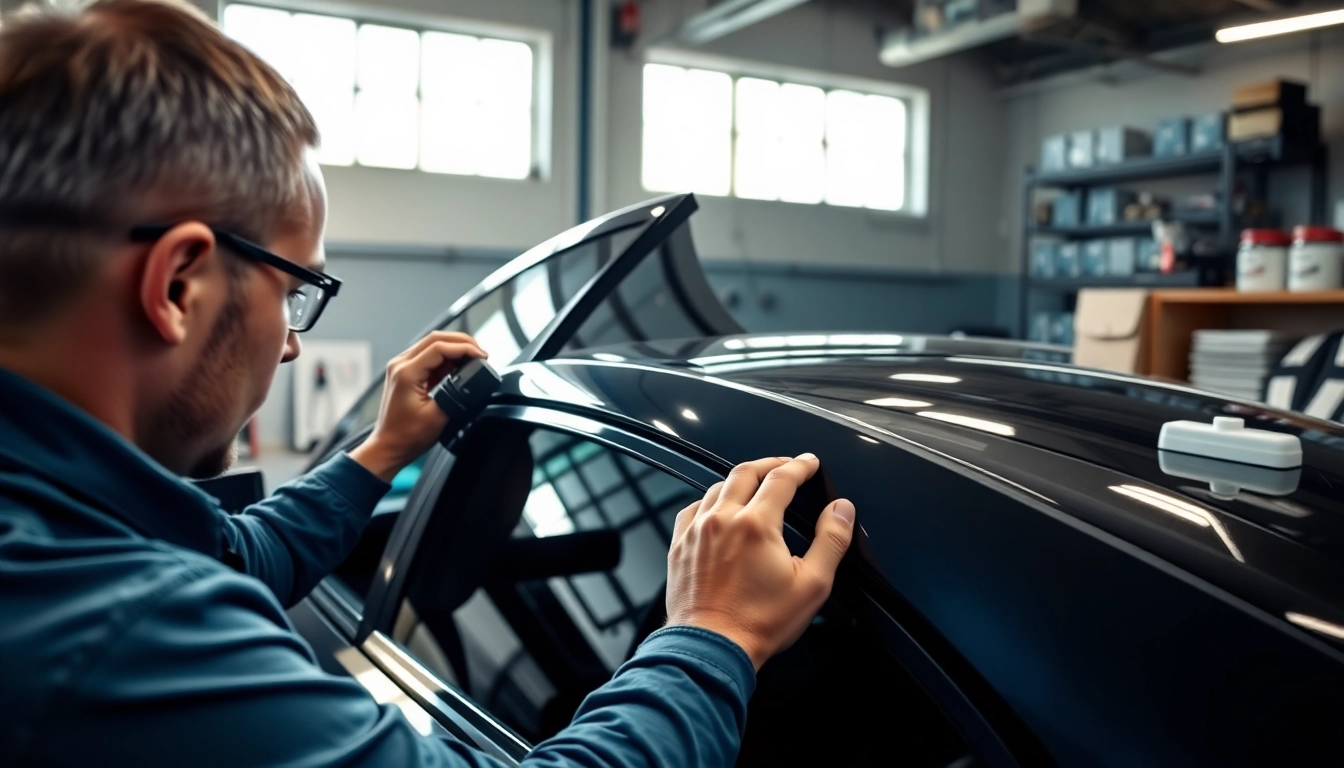Understanding Paint Protection Film
What is Paint Protection Film?
Paint Protection Film (PPF), often referred to as a ‘clear bra,’ is a transparent polyurethane material that is applied to the exterior surfaces of vehicles to protect against damage. Initially developed for military applications, PPF has evolved into a popular choice among automotive enthusiasts and everyday drivers alike. It serves as a barrier against scratches, chips, and other forms of wear and tear that can occur due to environmental factors such as road debris, UV rays, and chemical exposure. When considering options for auto care, paint protection film Southampton represents a robust solution tailored to the needs of vehicle owners in the region.
How Does Paint Protection Film Work?
Paint Protection Film works through a process called self-healing. This means that minor scratches and scuffs can “heal” themselves at elevated temperatures, restoring the film’s original appearance. The film is applied using an adhesive backing that bonds to the vehicle’s paint, creating a durable protective layer. The high-grade materials used in modern PPF are notably resistant to yellowing, making them ideal for long-term use. Additionally, many products incorporate advanced hydrophobic properties, allowing water to bead up and roll off, which contributes to easier cleaning and maintenance.
Common Uses of Paint Protection Film in Southampton
In Southampton, Paint Protection Film is commonly used on a variety of vehicles, from luxury cars to everyday sedans. The most popular applications include:
- Full Vehicle Wraps: Covering the entire car to protect all painted surfaces.
- Partial Front End: Targeting high-impact areas such as the hood, fenders, and bumpers.
- Glass Protection: Applying PPF to windshields and windows prevents chips and cracks.
- Interior Protection: Using PPF on surfaces subject to high wear, such as door sills and dashboard areas.
Benefits of Paint Protection Film Southampton
Protection from Environmental Damage
Environmental hazards such as bird droppings, tree sap, and road salt can cause significant damage to car paint. PPF acts as a shield, absorbing impacts from such elements and preventing them from embedding themselves in the vehicle’s finish. Research shows that vehicles with PPF coatings are less susceptible to paint degradation even after prolonged exposure to these elements. This protection extends the lifespan of your vehicle’s aesthetic, allowing it to maintain a showroom quality appearance.
Enhancing Resale Value
For many vehicle owners, resale value is a key consideration. Keeping a car in pristine condition directly influences its market worth. Paint protection film prevents unsightly scratches and fading, making the car more appealing to potential buyers. A car that has been well-maintained, with evidence of PPF application, can command a higher selling price compared to one that shows signs of wear and tear. Studies indicate that vehicles with PPF can retain their value much better over time, ensuring that owners get a favorable return on their investment.
Long-lasting Finish and Easy Maintenance
PPF is designed for durability, with many products offering warranties ranging from five to ten years. Unlike traditional wax or sealants, which must be reapplied regularly, PPF provides long-lasting coverage requiring minimal maintenance. Cleaning is simple too; a gentle wash with non-abrasive products is often sufficient to keep the film looking new. This convenience factor is particularly appealing to busy car owners who want to protect their vehicles without dedicating extensive time or resources to upkeep.
Selecting the Right Paint Protection Film
Types of Paint Protection Films Available
When selecting Paint Protection Film, you will encounter several types, each having unique characteristics:
- Self-Healing Films: These films can recover from minor scratches when exposed to heat.
- Clear Coated Films: Offering an extra layer of gloss, these films enhance the vehicle’s color depth.
- Matte Films: For vehicles with matte finishes, specialized films can maintain the non-glossy aesthetic.
- Color-Painted Films: Available in various colors, these films can change the appearance of the car surface while still offering paint protection.
Factors to Consider When Choosing PPF
When selecting the right paint protection film, consider the following factors:
- Durability: Look for films that offer high resistance to yellowing and damage.
- Thickness: Thicker films provide greater protection but can also be more visible.
- Warranty: A good warranty is indicative of a manufacturer’s confidence in their product.
- Installation Method: Some films require professional installation, while others may be DIY-friendly.
Comparing Cost and Performance
The cost of paint protection film can vary significantly, influenced by factors such as brand, type, and installation fees. Budget-conscious consumers may opt for lower-cost options, but it’s crucial to weigh the price against performance factors. High-quality films tend to offer better longevity, self-healing properties, and resistance against UV light and chemicals, leading to greater long-term savings. Always contrast the initial cost with potential repair and maintenance expenses over time to arrive at an informed decision.
Professional Installation of Paint Protection Film
Why Choose Certified Installers in Southampton
While some DIY options for PPF are available, hiring certified installers offers numerous advantages. These professionals have the experience and expertise necessary to ensure that the film is applied correctly without bubbles or misalignment. Further, certified installers often use high-quality, precise materials, which leads to a superior finish. In Southampton, experienced professionals understand the local environment and can recommend appropriate products and techniques tailored to the region’s specific conditions.
What to Expect During Installation
The installation process typically involves several steps:
- Preparation: The vehicle is thoroughly cleaned and prepped to ensure surface adhesion.
- Measurement: The installer will take precise measurements of the vehicle surfaces to cut the film accurately.
- Application: The film is carefully applied using techniques to prevent air bubbles and achieve a seamless look.
- Post-Application: After installation, the vehicle is examined for imperfections and adjustments are made as necessary.
Post-Installation Care Tips
To maintain the integrity of paint protection film post-installation, follow these care tips:
- Avoid washing your vehicle for at least 48 hours after installation to allow the adhesive to cure properly.
- Use only pH-neutral cleaners and microfiber cloths when washing to avoid damaging the film.
- Avoid exposing the film to intense heat or chemicals that could compromise its durability.
- Schedule professional inspections regularly to ensure the film remains in good condition.
Frequently Asked Questions About Paint Protection Film
How Long Does Paint Protection Film Last?
The lifespan of Paint Protection Film largely depends on the quality of the film and the environment in which it is used. High-quality films can last between five to ten years when properly maintained, while less expensive options may need replacement after a few years. Factors such as exposure to sunlight, extreme temperatures, and environmental contaminants can all influence the longevity of the film.
Can I Remove Paint Protection Film Myself?
While it is technically possible to remove paint protection film yourself, it is recommended to seek professional assistance. Improper removal can lead to damage to the underlying paint, which might negate the protective benefits of the film. Professional removals utilize heat and specialized tools to ensure that the removal is done safely and efficiently.
What Happens if the Film Gets Damaged?
If the Paint Protection Film becomes damaged, such as through tearing or significant scratching, it can often be repaired or replaced selectively. Many high-performance PPFs feature self-healing properties for minor blemishes, which can be addressed by applying heat. However, for significant damage, consulting with a certified professional is advisable to assess the best course of action.



